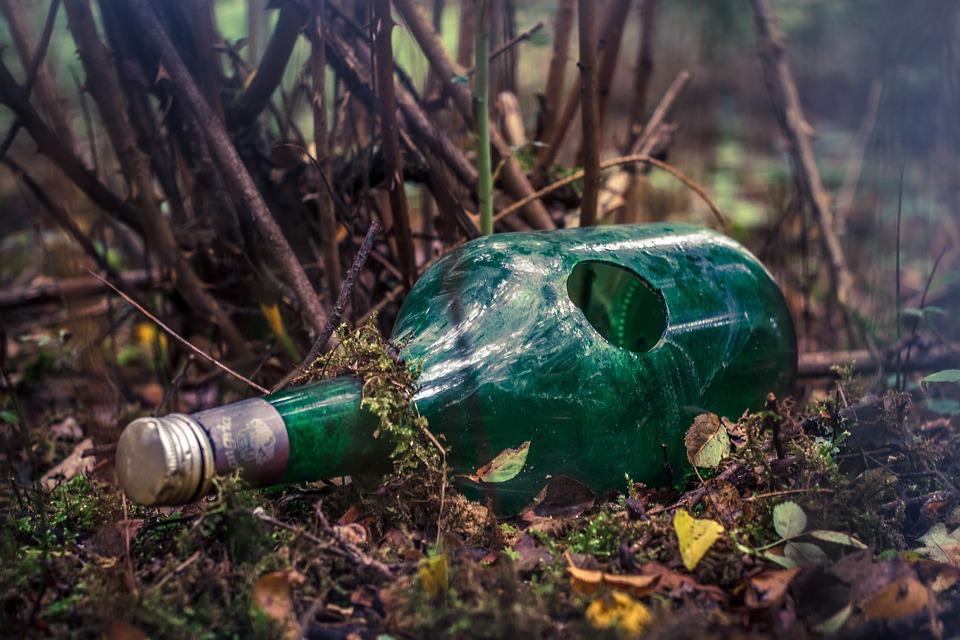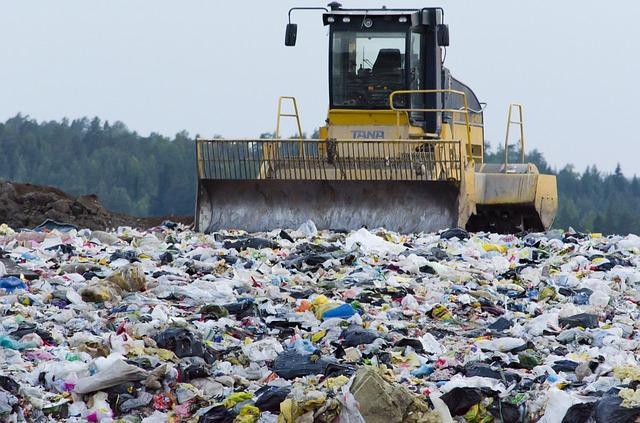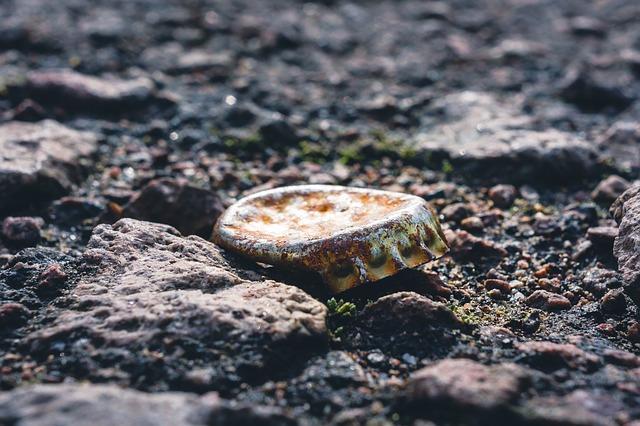Causes and Effects of Soil Pollution


Also known as soil contamination or land pollution, soil pollution is a type of environmental degradation which affects the natural substrate of the Earth. This degradation is the result of chemical substances being released which harm the land to varying degrees, endangering ecosystems and human health in communities around the world. This alteration to the soil has various causes and effects, but it is largely due to human activity. While there are some naturally occurring events which can result in soil pollution, the vast majority is due to activities such as agricultural production, industrial water pollution and improper waste disposal, among others. The consequences are fire and are significantly threatening the future of global ecosystems.
At thedailyECO, we look in more detail at the causes and effects of soil pollution. We also look at what solutions are available to prevent and mitigate these effects.
What is soil pollution?
Soil pollution can be defined as changes that alter the composition of the earth's surface or soil in such a way that it is degraded. In some cases, this can mean the soil is no longer useful, but it can also result in toxicity. This degradation is often the result of harmful chemicals being introduced to the soil, although there are also other alterations which can be made to degrade the natural soil environment.
When pollution affects soil and it is no longer useful, it often means it is no longer fertile. This means it can no longer be used to grow vegetation or can only do so to a limited capacity. It also means various living beings can no longer live in the soil, whether they are unable to derive nutrients or the quality is no longer fit for purpose. This means soil pollution leads to harmful repercussions to various ecosystems and the living beings within them.
Discover more about the components of soils which can be polluted with our article explaining the horizon layers of soil.
Types of soil pollution
We have provided a basic definition of soil pollution, but we should look at the different types of soil pollution which can negatively impact ecosystems. These include the following:
Endogenous or natural contamination
This is the type of soil contamination that occurs naturally, meaning it is a result of natural phenomena which alter soil quality. These phenomena can drag and filter natural chemical elements into the soil, often doing so in such high concentrations that the soil is degraded.
For example, we find acid rain which infiltrates the soil, forest fires which increase the presence of hydrocarbons or volcanic eruptions which contaminate the soil with the pollutants they expel. These also emit high concentrations of harmful gases and sulfur. While these can have significant impacts on ecosystems, they are relatively minor compared anthropogenic (human-caused) soil pollution.
Anthropogenic, exogenous or human pollution
This is the type of pollution that humans produce, i.e. it occurs when we introduce polluting agents into nature through human activities. This occurs in the case of vehicular pollution, industrial waste, increased urbanization, agricultural production and many others. Waste management is a particular problem since soil pollution is often a result of poor or mismanaged waste management schemes.
Chemical contamination
It is part of anthropogenic pollution since it occurs when synthetic chemical products are introduced into the environment. This is the case of pesticides, hydrocarbons and solvents. These substances negatively affect the entire environment, contaminating the soil as well as the air and water. This promotes an ecological imbalance of the area.
Soil contamination by infiltration
Surface water infiltrating the soil is a natural process, but it can be rendered harmful in certain areas. When the water is contaminated by various pollutants, its entry into the soil can result in the soil being contaminated also.
Land pollution by waste
The accumulation of human waste is derived from residences, businesses or large industries. When it occurs in a specific place such as a landfill, it generates a high level of direct soil contamination because the waste is degraded by exposure to the environment and leached into the soil. Discover more about this process with our article asking what is leachate?
Pollution by runoff
Pollution by runoff occurs due to the dragging of certain polluting agents through the land, such as fertilizers, pesticides, oil and others. This is due to the water from snow and rain that filters into the soil. When this occurs, the soil erodes and is contaminated by these agents.
Pollution from abandoned buildings
The abandonment of buildings and facilities that were once used for industrial, business or residential purposes also causes environmental pollution, especially in the soil. Vacant lands are left useless for a long time. During this period, they degrade and break down which can contaminate soul. They may also pollute through the presence of hazardous waste and other materials which are released into the land.
As we can see, much of the release of pollutants into soil comes from poor management strategies. We learn more with our article asking what is the meaning of waste management?
Causes of soil pollution
Contact with the polluted soil is not always direct. When toxic substances are buried underground they can end up contaminating groundwater that is then used for irrigation or drinking. They can also poison through the trophic chain, when contaminated fish, birds or any other animal are consumed.
Pollutants often enter the soil through the following routes:
- Incorrect storage of waste
- Intentional dumping of toxic waste
- Accidental dumping or spillage of toxic waste
- Accumulation of refuse on the soil surface
- Burial of waste
- Leaks in surface or underground tanks due to breakdown
- Poor infrastructure
- Poor waste management
While these are some of the common causes of land pollution, they are only a fraction of the problem. Some of the worst types of environmental degradation occur due to catastrophic pollution events such as radioactive leaks from nuclear facilities, intensive use of toxic pesticides, drainage runoff from mining operations, heavy metals from industrial chimneys, use of certain construction materials and poor sewage systems.
As you can see, many of these causes of soil pollution are from everyday commercial and industrial activities. While accidental contamination may occur, the normal functioning of many industries produce pollutants which are continuously resulting in land contamination and degradation. You can see how agrochemicals in agriculture can result in land pollution with our related guide.
Given the variety of sources of soil pollution, the causes are often difficult to identify. Pollutants can reach the soil, plants, animals or water for very different reasons that are not always obvious. In any case, what we can say is that almost all of them have to do with human action and industrial activity.
Radioactive waste materials are some of the most difficult to disposes of safely. Learn more about the difficulties involved with our article asking what is radioactive waste management?

Types of soil contaminants
The sources of soil contamination are vast and very diverse. As a brief summary, we can highlight that the main soil contaminating agents are:
- Urban waste that contaminates water and soil
- Pesticides (e.g. insecticides, herbicides and fungicides)
- Mining activities
- Large accumulation of refuse (landfills, industrial zones and other areas)
We know about how soil is polluted by studying various soils over time. Learn more about how we are able to reach these conclusions with our article on what is soil science study?
Effects of soil pollution
The loss of land quality has a series of negative consequences, ranging from its devaluation to the impossibility of using it for purpose. These purposes include building, farming agriculture or the hosting a healthy ecosystem.
The effects of soil pollution can be suffered silently, resulting in compounded harm of victims, whether human, animal or plant. A sudden contamination of soil can cause real environmental catastrophes and many victims. An extreme case is the Chernobyl disaster, the effects of which are still being experienced decades later.
Another example is the radioactive leak from the Fukushima nuclear power plant in Japan. The contamination of land or soil has affected agriculture, livestock and fishing. Radioactive cesium has even been found off the coast of Fukushima, specifically in the earthy seabed from these same spills. This is according to a recent study by the Institute of Industrial Sciences of the University of Tokyo, Kanazawa University and the National Research Institute.
Deterioration of the landscape due to the impoverishment of the ecosystem is often an irreversible ecological loss. Land contamination also means economic losses by preventing the exploitation of this natural environment by the native population or by industrial investors.
Generally speaking, the following are common examples of the effects of soil pollution:
- Loss of flora and its biodiversity
- Difficulties for agriculture and farming
- Pollution and loss of wildlife
- Landscape deterioration
- Global impoverishment of the ecosystem both marine and terrestrial
Discover how a more ecological approach to marine industries can be taken with our article asking what is the blue economy?

How to prevent soil contamination
Prevention is the best solution to the problems caused by soil pollution. It may be true that this type of pollution cannot always be avoided. Sometimes accidents occur or unforeseen consequences arise from practices previously thought to be safe.
Going straight to the roots of the problem, a drastic change in the production model would be necessary. Similarly, a ban on certain practices can be implemented. These can include strip mining, industrial activity that produces toxic waste or the use of artificial fertilizers in agriculture.
For many industrialists, the banning of such practices are seen as not being feasible. This can be observed in our continued reliance on fossil fuels, despite the scientific consensus stating that it is increasing climate change at an alarming rate. With this perspective, coverups or clandestine practices are often used to pretend the negative impacts are minimal.
Since pollution has increased in recent decades as a result of industrialization and urban development, the solutions are derived from controlling these sources. Actions are usually focused on improving recycling plants to reduce the contamination of land and water.
Soil bioremediation is a strategy that seeks to restore contaminated ecosystems using living organisms, such as bacteria, plants and fungi. Their implementation depends on the type of contamination to be counteracted. Its application is broad, with interesting results in soils contaminated by radioactivity or by mining activities.
Proper recycling of waste and suitable waste treatment strategies are imperative for minimizing soil pollution. The promotion of renewable energy as well as organic farming practices can also be helpful in preventing or minimizing soil pollution. Maintaining sewage systems in good condition, as is improving the treatment of residual water and industrial waste.
In this way, some of the solutions to soil pollution involve:
- Prevention and awareness
- Prohibition of harmful practices
- Improvement in recycling processes
- Improvement in water purification processes
- Use of renewable energy
- Renewing sewage systems
You can discover a specific practice in agriculture which is designed to make it more sustainable and reduce soil pollution with our article asking what is regenerative farming?

Photos of soil contamination
In the photo gallery below you will find some examples of soil contamination with images that speak for themselves.



















If you want to read similar articles to Causes and Effects of Soil Pollution, we recommend you visit our Pollution category.


























